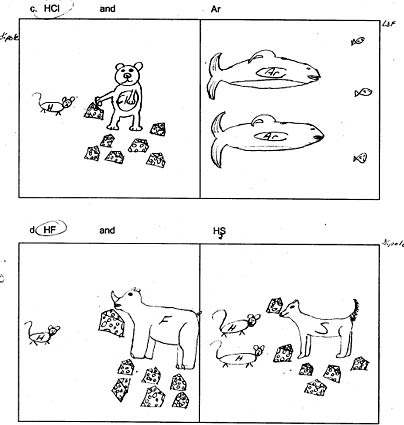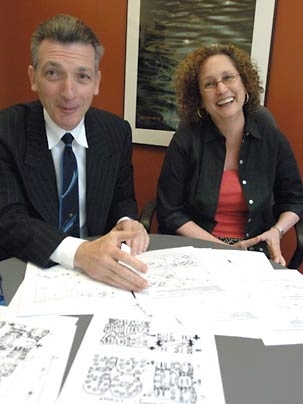If a picture is worth a thousand words, perhaps drawing and visualizing can help science students understand more than they get from their textbooks.
MIT research scientist and science photographer Felice Frankel is exploring this idea through "Picturing to Learn," an educational technique that is being tested at MIT.
Picturing to Learn prompts students to create drawings from the concepts they learn from lectures and texts. For many students, thinking visually and trying to draw for the purposes of communication can highlight areas of confusion, Frankel said.
"It is a simple idea that makes all the sense in the world," she said.
For Frankel, whose work centers on the visual expression of science, visual thinking is one of the keys to a holistic understanding of any concept. "It is how I learn," she said.
Frankel said she noticed that others felt the same way. When she spoke with researchers or professors about their work, they would often grab paper and pencil. Perhaps if drawing helped in explanation, it might also aid in learning, she said. "It is not just about communicating ideas to others," Frankel said. "It is also about communicating with ourselves."
Frankel has spent roughly five years on the project and has received some funding from the National Science Foundation. "It was just enough to get it off the ground," she said.
Working with a small team -- including undergraduate researchers Karin Noiva and Marianna Shnayderman; Dan Armendariz (S.B. 2006), a web programmer; and project manager Joanne Larrabee of Information Services and Technology -- Frankel developed the program for use in the classroom.
Visual chemistry
Piloted��in 2003 for a small class taught by Professor Caroline Ross of materials science and engineering, the idea was developed in Subject 3.091, Introduction to Solid State Chemistry, a fall lecture course with 500 freshmen taught by Donald Sadoway, the John F. Elliott Professor of Materials Chemistry. The program has been largely met with enthusiasm, Sadoway said.
Sadoway asked his students to create drawings that explained and compared molecular bonds in compounds with different boiling points. They were encouraged to look at physical features such as molecular size and electron configuration to account for the forces at work within and between molecules.
For many students, the assignment was a challenge and something that brought them outside of their comfort zone. "They are afraid of being anything but the best," Sadoway said.��
Many of the students found creative ways to explore the questions, drawing animals, spaceships and people in place of molecules. Using metaphors -- the ways keys fit into locks and the heel-height of shoes -- for the way compounds interact, students thought through concepts in a new way, Sadoway said. "They had to pick their metaphors carefully though," he said. "Some did not work."
For some students, the assignment highlighted a failure to see the whole picture, Sadoway said. While students can memorize equations and correctly answer quantitative test questions, it is far more important that they walk away with a deeper conceptual understanding, which was an intended outcome of the picturing exercises, he said.��
"This is a different mode of communication, and it really works for some people," said Sadoway. The exercise was also eye-opening for Sadoway. "By studying the drawings of students who answered incorrectly I was able to zoom in on the precise nature of their misunderstanding. On this basis I have learned how to revise the way I teach this topic," he said.
For today's generation of students who have what Sadoway called "a heightened visual awareness," incorporating drawing into the lecture hall is a natural progression, he said. "Most really seemed to love it."
Sadoway said he plans to use Picturing to Learn again in the future. "As a whole, the class did far better on exams in 2005 than they did in 2004," he said. "We attribute that, in part, to Picturing to Learn."
For more information on the program, please visit: http://web.mit.edu/i-m/picturing.







